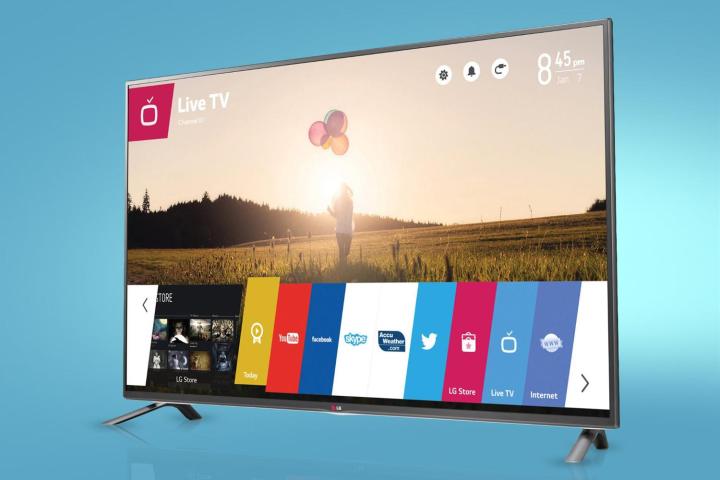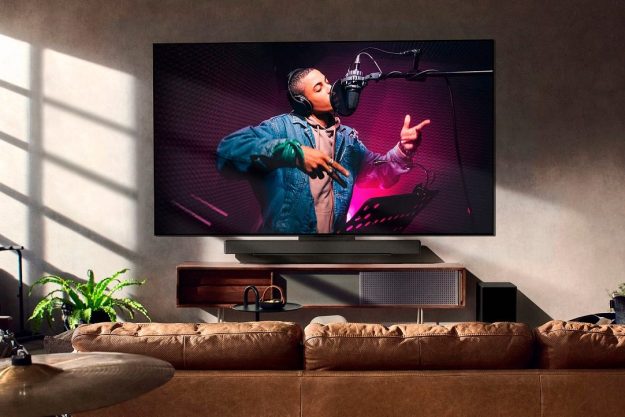
After putting LG’s new webOS-powered smart televisions through their paces and thoroughly enjoying it, we found ourselves wondering: How did LG take what was once a reject mobile operating system and turn it into a ground-breaking smart TV platform?
We found the answers on the ground at LG’s Silicon Valley Lab, where we talked to some of the folks who were responsible for webOS’ remarkable resurrection. As it turns out, webOS is more than just a pretty user interface, it’s also just the first part of LG’s strategy to push smart TV forward, making it better for everyone.
Was webOS really that bad to begin with?
Prior to landing in LG’s hands, there’s no question that webOS reeked of failure. But Palm and HP had tried to produce webOS-powered products, and failed hard. But was the problem really with webOS? Not at all – webOS was just guilty by association.
LG embraced the opportunity to bring in fresh ideas, and its televisions are now better for it.
LG’s decision to buy up webOS raised more than a few eyebrows, but because LG was forthright about its intentions, at least we knew what the company was up to. What we couldn’t see at the time was how webOS would work a platform made for 3-inch smartphones into 55-inch TVs in a way that made sense.
Scrubbing out past mistakes
Even with a functional OS in front of it, LG’s work was cut out for it, in part because of how badly other companies were already botching their “smart” TVs.
For one, smart TVs have always tried to look like your smartphone or tablet: little square icons or tiles, strewn up and down the screen in a grid of rows and columns. Unfortunately, that the grid of icons can take up most or all of the screen, blocking whatever you’ve been watching out entirely, or reducing it to a small window in the corner.
Most of these interfaces also exist on a sort of lock down, with very little customization potential. What if you want your Vudu app to live right next to your Netflix app, just before your PBS app? And what if you didn’t want the Facebook app at all? Tough luck.
Even more detrimental to the user experience, apps have always been filed away in a separate section of the TV, divorced from everything else your TV can play. Once you’re into the smart TV side, you’ve left the TV side. Sometimes that means adjusting picture preferences and other television settings had to be done outside the apps, or couldn’t be carried over at all. It also meant that moving between smart TV and any of the TV’s other inputs – say your cable box, or game console – took longer than most people were willing to put up with.
Switching between apps has been just as miserable. Each app has always existed in its own little silo, so you had to quit one app, wait for it to close out, then open another app, which you had to wait to load. Without being able to run two apps running at once, it’s been impossible to say, toggle between something you’re watching on Hulu and something playing on Netflix.
Add all of those points up and what you get is a slow, slow, slow operating system that not even a super-charged quad-core processor can remedy. No wonder people prefer set-top boxes.
How’d they do that?
LG’s webOS team basically looked at each one of these issues, and set about fixing them. Doing this required an entirely new line of thinking, a big break from everything LG has done in the past, as it was just as guilty of tumbling into those pitfalls as anyone else. Perhaps that’s why bringing fresh blood into the fold was so critical for LG: smart TV didn’t just need an overhaul, it needed a reimagining.
Itai Vonshak’s title is Senior Director of UX (user experience) and Product, but you can think of him as LG’s more approachable version of Jony Ive. Vonshak was one of the big brains behind the design aspects of the webOS smart TV platform, and explained to Digital Trends what the guiding principles were going into the redesign.
Smart TV didn’t just need an overhaul, it needed to be reimagined.
We’re shown a line of “cards,” a familiar holdover from the webOS we saw in Palm and HP’s phones. But it looks totally different here. It’s just one simple line that runs across the lower third of the screen, where people are already used to looking for information –it’s where video producers overlay all the stuff you need to know. And it immediately feels familiar.
Vonshak explained the line this way: “The idea is: Everyone can understand time. Past, present, future. If you want to go back you go one side, if you want to go forward it’s the next.”
What Vonshak says sounds almost preposterously elementary, but elementary is what makes this line work. We’re back to simple, again. And it’s like it always should have been this way. Why did it take so long to get this?
But simple can get to boring in a hot minute. Which is why webOS leans so heavily on animation in its interface. Each action is accented by some sort of bobbing motion, or pop-up graphic. Elements shrink and expand, moving to the foreground or background depending on whether they deserve your attention at that time. It feels a lot like the animation you get with your smartphone or tablet.

In the end, the KISS (keep it simple, stupid) principle pushed the webOS design toward creating an uncluttered, user-friendly, even fun interface that obliterated all of those problems we listed earlier. It doesn’t dominate your TV screen. There’s no loading or backing out of the smart TV platform. It’s always right there. You can load up two apps and switch between them as quickly as you can change the channel on your cable box. You can effortlessly drag and drop your apps wherever you want them to be. And by keeping things simple, webOS is fast — you don’t wait for it, it waits on you.
Wide open to new possibilities
Now that LG has got something really special, you’d think it would keep webOS’ secret sauce under lock and key. Not the case. As it was before LG got its hands on it, webOS remains an open platform. And it has been enhanced with the introduction of something LG is calling Connect SDK.
Connect SDK is a software developers kit, and while the tech-y definition may not sound all that interesting, its implications are fascinating. Very basically speaking, Connect SDK makes it easier for developers to build apps for multiple platforms. “ Connect SDK is really a piece of technology that different developers can use to make their mobile applications talk really easily to different TVs,” Colin Zhao explains.
LG was just as guilty of tumbling into those pitfalls as anyone else.
All this seemingly selfless openness may have an ulterior motive: filling the webOS app store. One of the biggest problems with webOS before was that the developer community didn’t jump behind it with much enthusiasm. Now LG doesn’t have to convince developers to write for webOS, it can sell them on Connect SDK and all the platforms it works on. If LG’s competitors don’t get involved (and at least one of them absolutely will not) then it kind of makes them look bad in comparison.
Can LG shake consumers’ preconceptions about webOS enough for them to give it a chance? With the first models arriving in May, that remains to be seen. But having played with it ourselves, we can say with certainty that the ones that do will find one of the best smart TV platforms out there.
Editors' Recommendations
- Best Vizio TV deals: Cheap smart TVs starting at $90
- This 40-inch smart TV is a no-brainer while it’s discounted to $148
- 2024 LG TVs first look: G4 OLED upgrades and a pleasant webOS surprise
- Samsung unveils pricing and preorder details for its 2024 OLED TVs
- LG sweetens the deal on its new CineBeam Q projector




